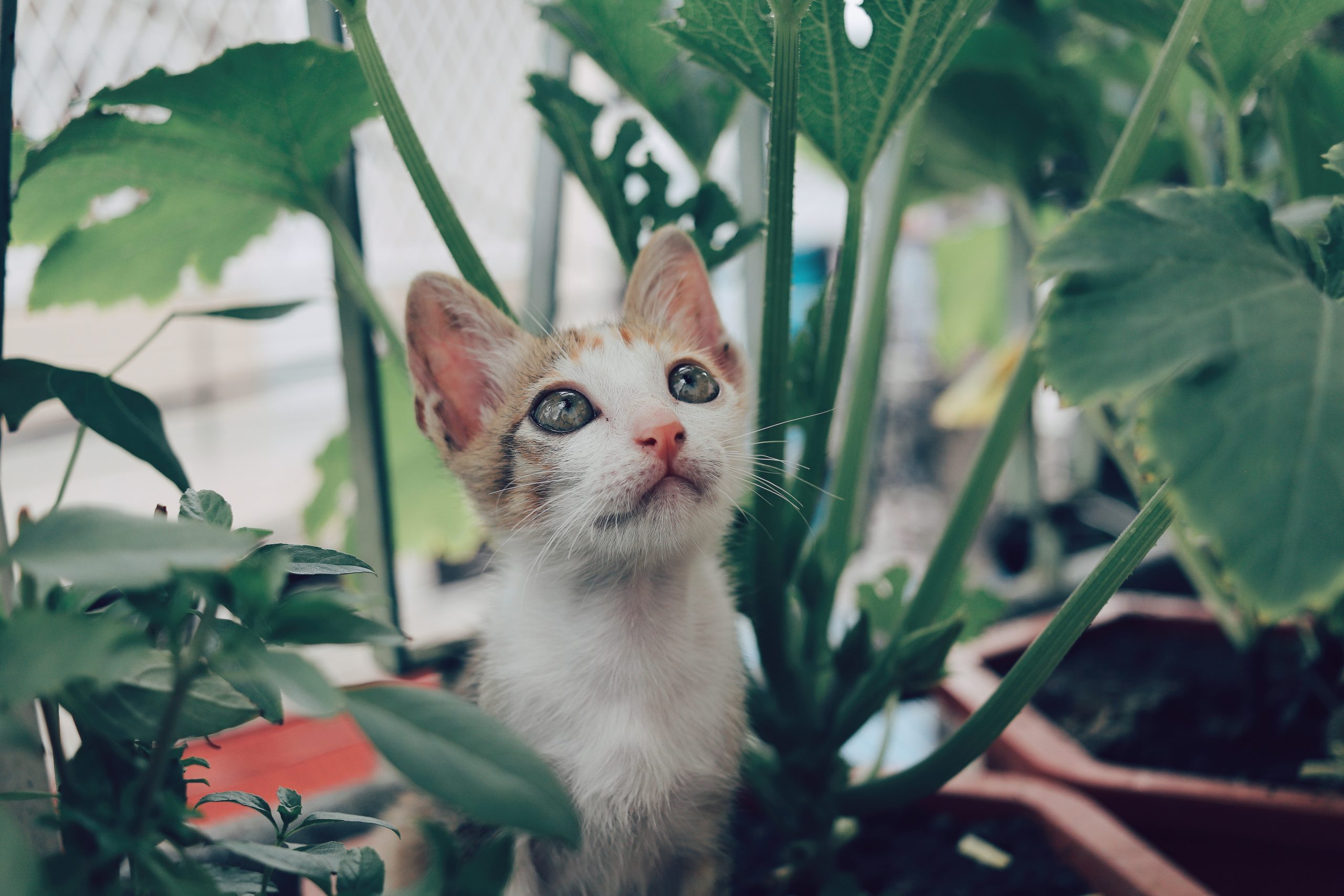
If you want to fill your home with lush greenery but also keep your furry friends safe and sound then this article will show you the perfect leafy companions that will bring both joy and peace of mind to your home. Ready? Than let’s dive into the wonderful world of pet-friendly houseplants!
The good news is that there are a number of indoor plants that are generally considered safe for pets. However, it’s important to note that individual pets may have different sensitivities or allergies, so it’s always a good idea to monitor your pets when introducing new plants. If you have any doubts or concerns, please consult your local veterinary practice. Better safe than sorry!
Here are a few examples of commonly recommended pet-friendly houseplants:
- Parlour Palm (Chamaedorea elegans)
- Boston Fern (Nephrolepis exaltata)
- Areca Palm (Dypsis lutescens)
- Calathea (Calathea ssp.)
- Spider Plant (Chlorophytum comosum)
Lets look at each in a little more detail…
Parlour Palm (Chamaedorea elegans)
The Parlour Palm, scientifically known as Chamaedorea elegans, is a popular indoor plant that can add a touch of tropical beauty to your living space. If you’re a pet owner, you’ll be happy to know that this houseplant is considered safe for cats and dogs, making it a great choice for homes with furry friends.
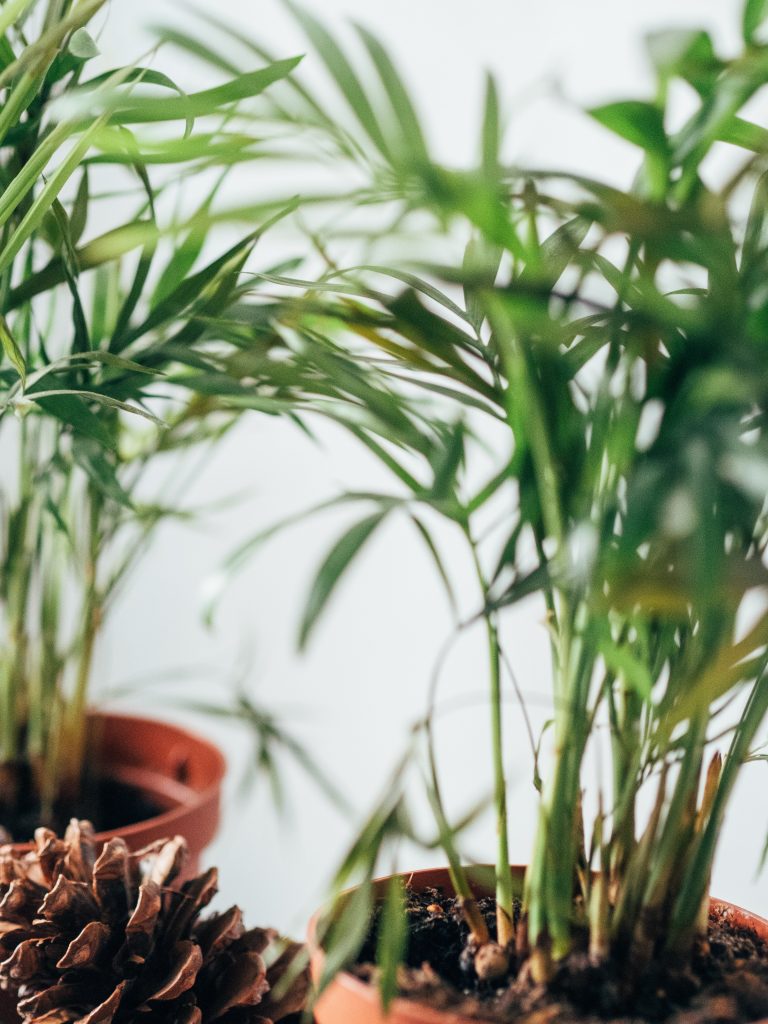
When it comes to growing the Parlour Palm, it’s a relatively easy plant to care for, even for beginners. It thrives in moderate to bright, indirect light, so placing it near a north or east-facing window is ideal. However, it can also tolerate lower light conditions, making it versatile for different areas of your home.
To ensure your Parlour Palm remains happy and healthy, it’s important to provide it with well-draining soil. A general purpose peat-free compost, or specialist houseplant compost, works well. Remember to water it consistently, allowing the top inch of soil to dry out between waterings. Overwatering can lead to root rot, so be mindful not to let it sit in standing water.
In terms of temperature, the Parlour Palm prefers average room temperatures between 65°F and 80°F (18°C to 27°C). It appreciates a slightly more humid environment, so misting the leaves or placing a tray with water nearby can help create the desired humidity levels.
As for maintenance, occasional dusting of the leaves with a damp cloth can keep them clean and promote better photosynthesis. While the Parlour Palm doesn’t require frequent fertilization, you can feed it with a balanced liquid fertilizer diluted to half strength during the growing season (spring and summer) to support its growth.
With proper care and attention, your Parlour Palm can grow into a lush, vibrant plant, adding a touch of greenery and a tropical vibe to your indoor space. Just make sure to keep an eye on your pets, as they may be curious about the plant, and discourage them from chewing on the leaves.
So, if you’re looking for a pet-safe and relatively low-maintenance indoor plant, Chamaedorea elegans, or the Parlour Palm, is a fantastic choice that can bring a refreshing touch of nature to your home.
Boston Fern (Nephrolepis exaltata)
If you’re looking for a classic houseplant that never goes out of style, the Boston Fern (Nephrolepis exaltata) must surely be on the shortlist. With its luscious, feathery fronds, this beauty is sure to add a touch of elegance to any space. Boston Ferns are safe for your furry friends so you can enjoy its company without worrying about any harm coming to your adorable companions.
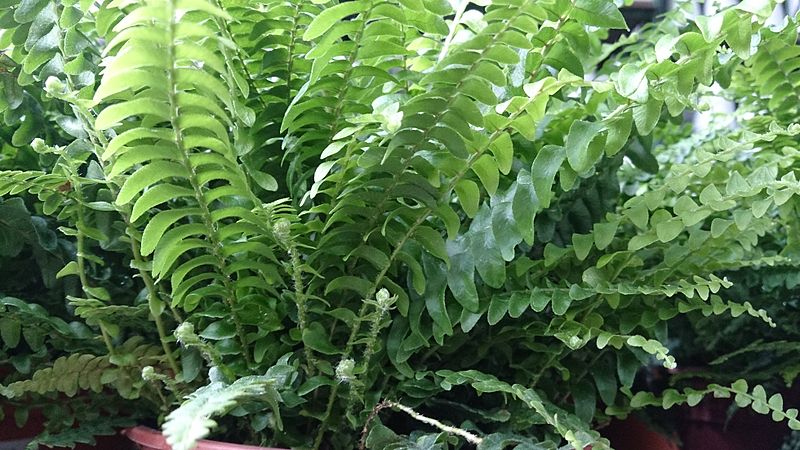
Boston Ferns thrive in bright, indirect light, so find a cosy spot near a window but away from direct sunlight. You should aim to keep the soil slightly moist at all times, but don’t drown the poor thing – a good rule of thumb is to water when the top inch of soil feels dry.
Humidity is key for these ferns, so mist them regularly or place a tray of water nearby to keep them happy and hydrated. If you notice the fronds turning brown or crispy, it might be a sign that the humidity levels are too low.
One more thing – these ferns love a little extra TLC. Give them a monthly dose of balanced liquid fertilizer during the growing season to keep them thriving. Oh, and don’t be alarmed if they shed a few leaves – it’s a natural process for them.
So, there you have it – the lowdown on the wonderful Boston Fern. It’s a pet-friendly, low-maintenance beauty that will bring a refreshing touch of green to your home. Give it some love, and it will reward you with its graceful presence.
Areca Palm (Dypsis lutescens)
The Areca Palm, also known as Dypsis lutescens, is a tropical gem that’s bound to bring a touch of paradise into your humble abode. This stunning houseplant is not only a feast for the eyes but also a great choice for pet owners seeking a safe and stylish addition to their homes.
The Areca Palm boasts feathery, arching fronds that create an instant tropical vibe. Its vibrant green foliage adds a splash of colour to any room, making it a true showstopper. Plus, its air-purifying qualities make it a top-notch choice for maintaining a healthy living space.
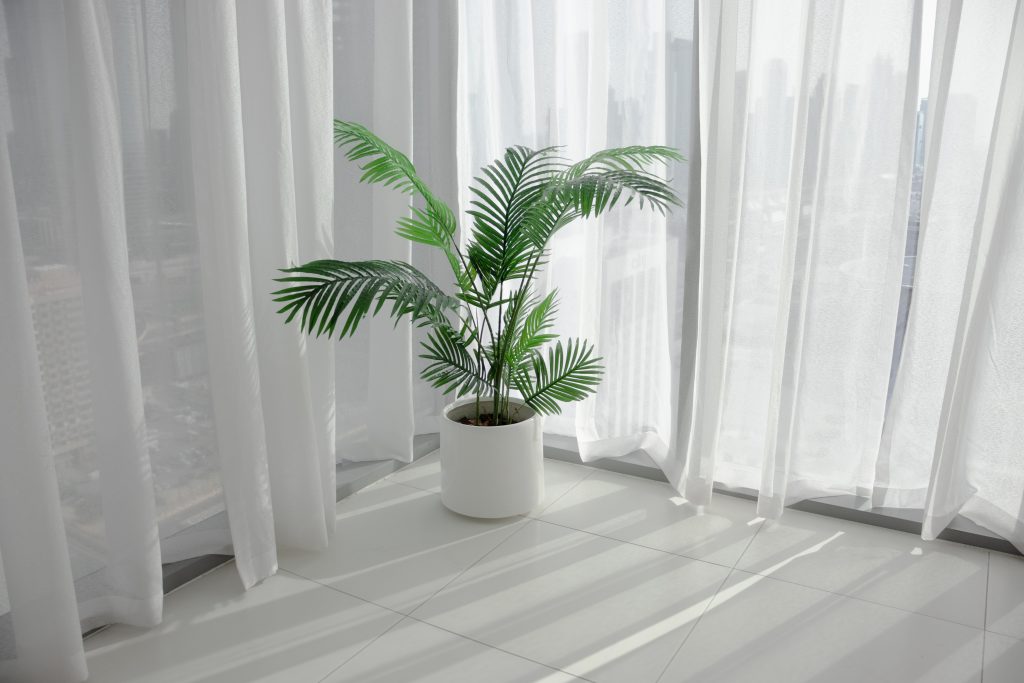
Caring for an Areca Palm is a breeze, even for those who aren’t blessed with a green thumb. It thrives in bright, indirect light, so place it near a window where it can soak up the sunshine without being exposed to harsh rays. As for watering, keep the soil consistently moist but not soggy, and make sure to provide good drainage.
During the growing season, which is typically spring and summer, a monthly dose of balanced houseplant fertilizer will give your Areca Palm an extra boost. And don’t forget to wipe its fronds gently with a damp cloth occasionally to keep them looking their best.
With its tropical beauty, air-purifying benefits, and non-toxic nature, it’s a win-win for both plant enthusiasts and pet lovers alike. So why not bring a slice of paradise into your home with an Areca Palm?
Calathea (Calathea ssp.)
Calatheas are known for their mesmerizing foliage and graceful presence and can bring a touch of paradise to any living or office space.
One of the things that make Calatheas so special is their unique leaf patterns. From zebra stripes to intricate veining, these plants come in a variety of stunning designs that will leave you in awe. Not only are they visually captivating, but Calatheas also have a reputation for being pet-friendly, so you can have peace of mind if you have furry friends roaming around.
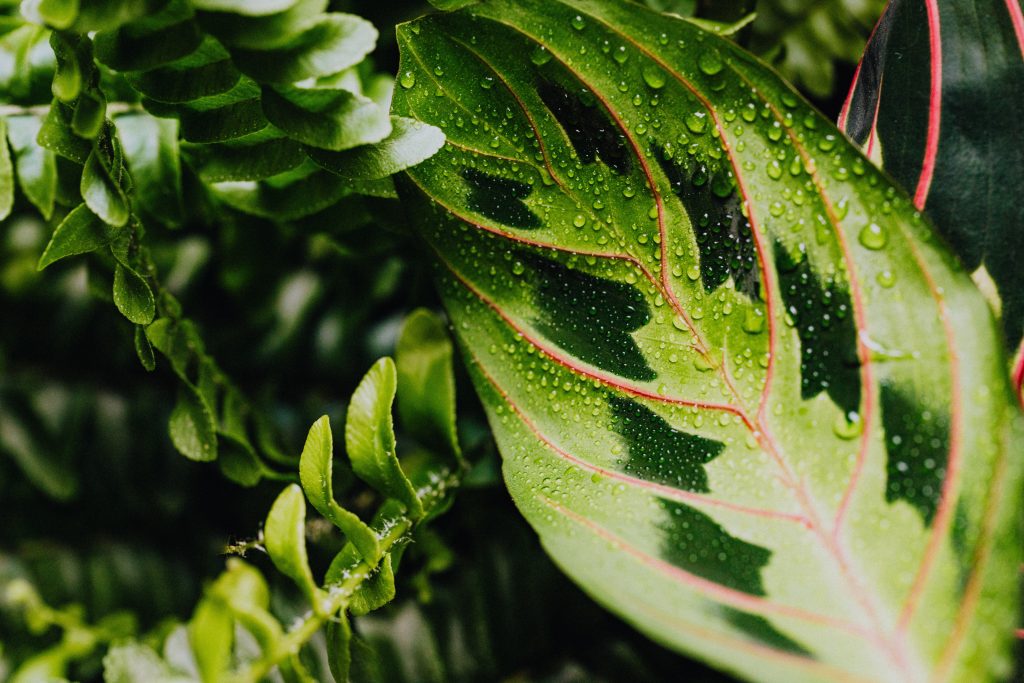
Apart from their aesthetic appeal, Calatheas are known for their ability to move. Yes, you heard that right – these plants have a nifty trick up their leaves! They exhibit a phenomenon called “nyctinasty,” which means their leaves open and close in response to the changing light during the day. It’s like having a natural clock right in your living room.
Caring for Calatheas is generally straightforward but they will benefit from a little extra care. They prefer bright, indirect light and thrive in humid environments. So, misting their leaves regularly or placing them near a humidifier can keep them happy. As for watering, Calatheas enjoy moist soil, but make sure not to overdo it as they don’t like sitting in waterlogged conditions.
Calatheas thrive in temperatures between 65°F to 75°F (18°C to 24°C). They prefer warm and tropical conditions, so it’s important to keep them away from drafts and extreme temperature fluctuations.
One bonus tip for Calathea enthusiasts is to avoid exposing them to direct sunlight. Their delicate leaves can scorch easily, so it’s best to keep them away from windows or use sheer curtains to filter the light.
With a little love and attention, your Calathea will reward you with vibrant foliage and a touch of natural elegance.
Spider Plant (Chlorophytum comosum)
If you’re on the hunt for a new houseplant that’s both easy to care for and visually stunning, look no further than the trusty Spider Plant. This popular plant is a staple in many homes and for good reason.
First off, Spider Plants are incredibly low-maintenance. They thrive in a variety of lighting conditions and don’t need to be watered too often. In fact, overwatering can actually harm these plants, so it’s best to let the soil dry out a bit before giving them a drink.

But perhaps the best thing about Spider Plants is their unique appearance. Their long, spindly leaves grow in a way that resembles spider legs, hence the name. They also produce small white flowers that eventually turn into new tiny Spider Plants, making them a great option for propagating and sharing with friends.
Not only are Spider Plants visually appealing, but they’re also great for improving air quality in your home. They’re known to remove harmful toxins such as formaldehyde and carbon monoxide from the air, making them an ideal choice for anyone looking to breathe a little easier.
